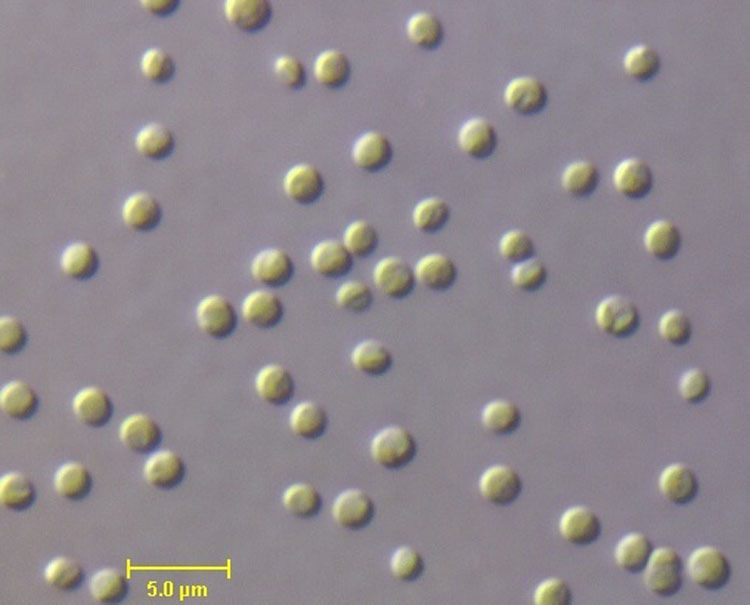Two organisms in the process of merging to form an endosymbiotic relationship has been spotted by biologists in the US.
Writing in Science, UC Santa Cruz researcher Anne Thompson and her  colleagues show that a single-celled species of marine algae called a prymnesiophyte has teamed up with a smaller bacterial species, which they have named Candidatus Atelocyanobacterium thalassa.
colleagues show that a single-celled species of marine algae called a prymnesiophyte has teamed up with a smaller bacterial species, which they have named Candidatus Atelocyanobacterium thalassa.
DNA tests show that the bacterium has a stripped-down genome containing almost none of the genes needed to generate the carbon-based materials that cells use for energy and growth.
But what it does have is a well-developed system for capturing nitrogen from the air and turning it into a bioavailable form that plants and algae can use.
These two facets strongly suggest a mutualistic relationship with a partner, and by carefully filtering seawater, Thompson and her colleagues were able to show the bacterium snuggling up with its algal associate.
In fact, the bacteria appear to occupy special tailor-made pits on the surface of the algae, to which they feed nitrogen compounds and receive in return food in the form of organic carbon compounds.
The team confirmed this nutrient exchanged by feeding each of the partners radioactive nitrogen or carbon compounds and following where the labelled materials went.
The present arrangement might be an evolutionary stepping-stone to the wholescale incorporation of the bacterium into the algal cells, as scientists speculate has happened previously to form mitochondria, the power-producing structures inside cells, and chloroplasts, the structures in leaves that enable plants to photosynthesise. It therefore provides an insight into how this process might occur.
Commenting on the study, Cambridge scientist Professor Alison Smith, who is looking at how symbioses like this start in the first place but was not involved in the present study, says, "what benefit is it for either organism to be mutualistic, and in this case for one to become obligately reliant on the other? We think it must start with the exchange of nutrients, but without any obligation. It is only once a relationship has started that subsequent gene loss makes it tighter..."










Comments
Add a comment